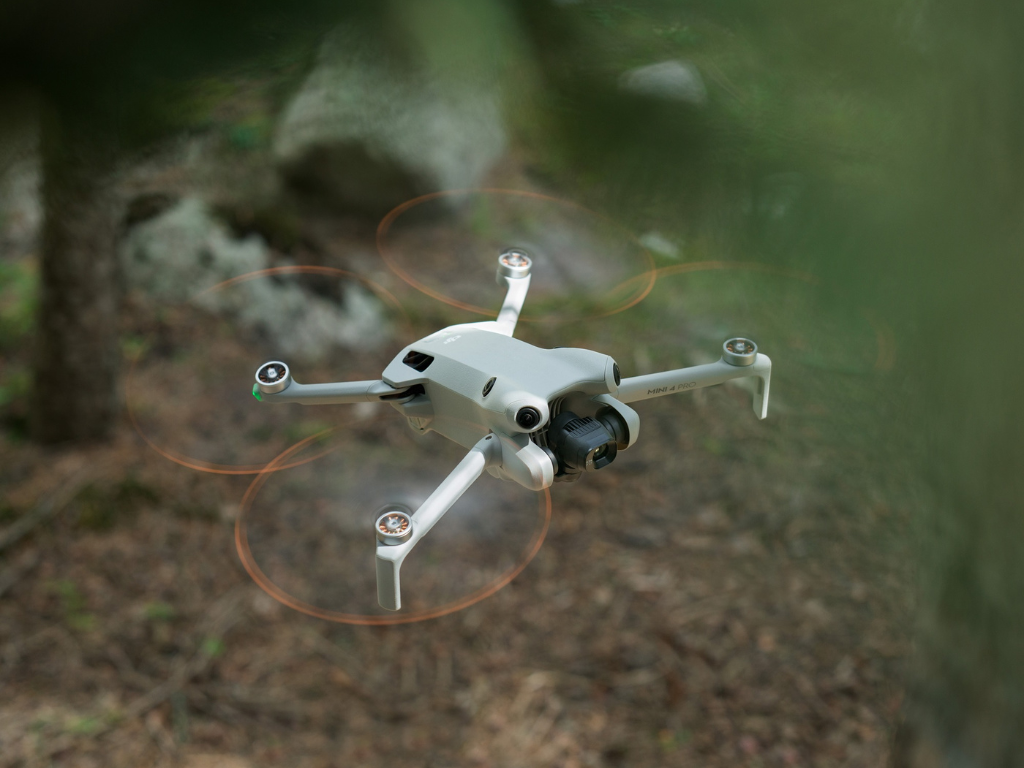
Products
DJI Mini 4 Pro vs DJI Mini 3 Pro vs DJI Mini 3
In-depth comparison between the DJI Mini 4 Pro, Mini 3 Pro, and Mini 3. Find out about the Mini 4 Pro's key upgrades.
The Mini 4 Pro is DJI's newest mini drone. How does it compare to the Mini 3 Pro and Mini 3?
Mini 4 Pro is DJI's most powerful Mini drone yet;
Mini 4 Pro has an upgraded camera system compared to the Mini 3 Pro and Mini 3, including the ability to shoot 4K/60fps HDR; Night Shots video; and can utilise the D-Log M and HLG colour profiles;
Mini 4 Pro has enhanced safety features, including omnidirectional object sensing and Advanced Return To Home;
Upgraded DJI O4 transmission with the Mini 4 Pro provides more stable connections and a live-view quality with higher frame rate;
Mini 3 has longest flight time (38 minutes) compared to the Mini 4 Pro and Mini 3 Pro (34 minutes);
DJI Mini 3 is the most cost-effective but does sacrifice on functionality.
The Mini 4 Pro is here, marking DJI's latest iteration of its Mini drone series.
Engineered with an upgraded camera system, enhanced transmission, and omnidirectional obstacle sensing, the Mini 4 Pro boasts some impressive features.

But how does it compare with the DJI Mini 3 Pro...
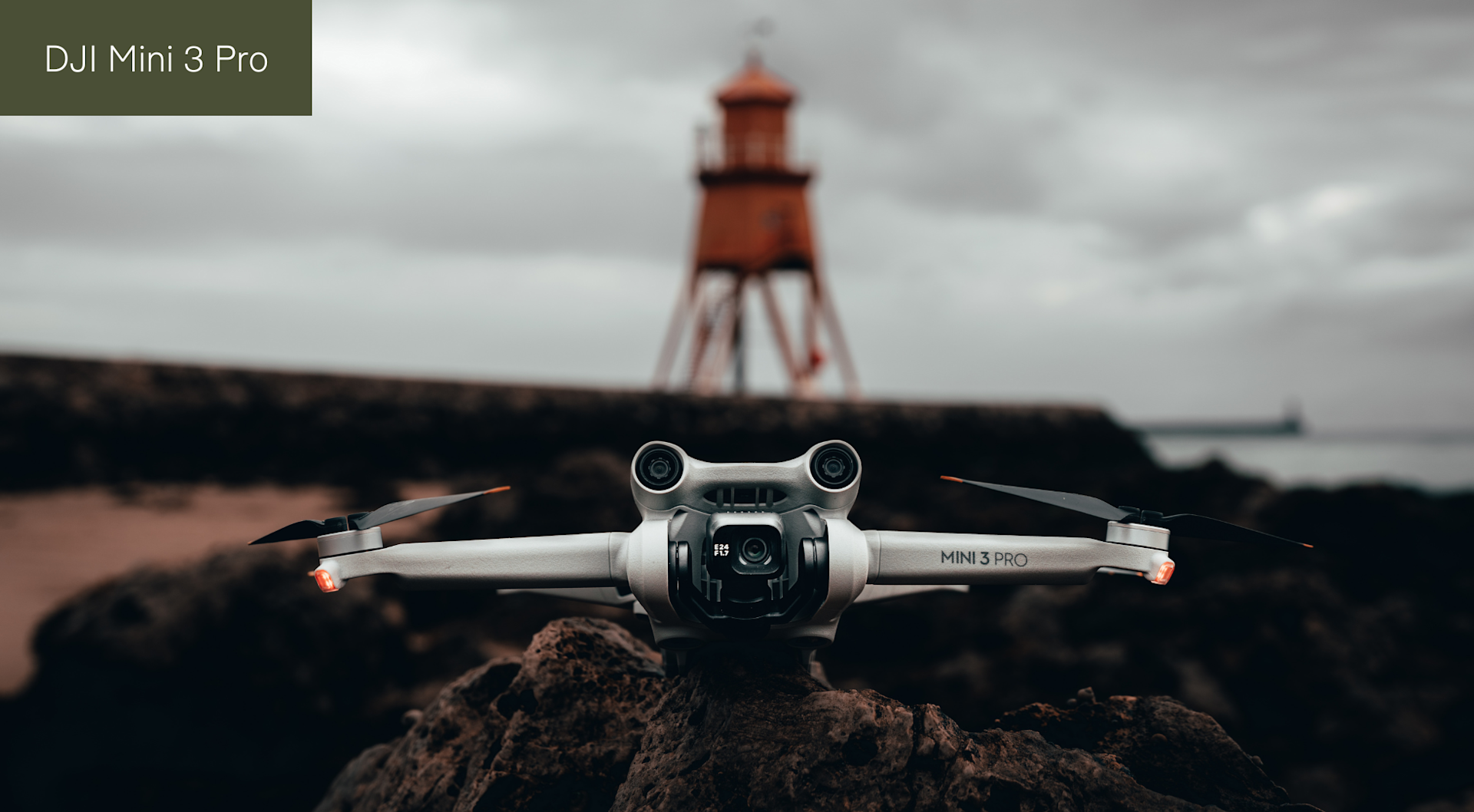
...and the DJI Mini 3?
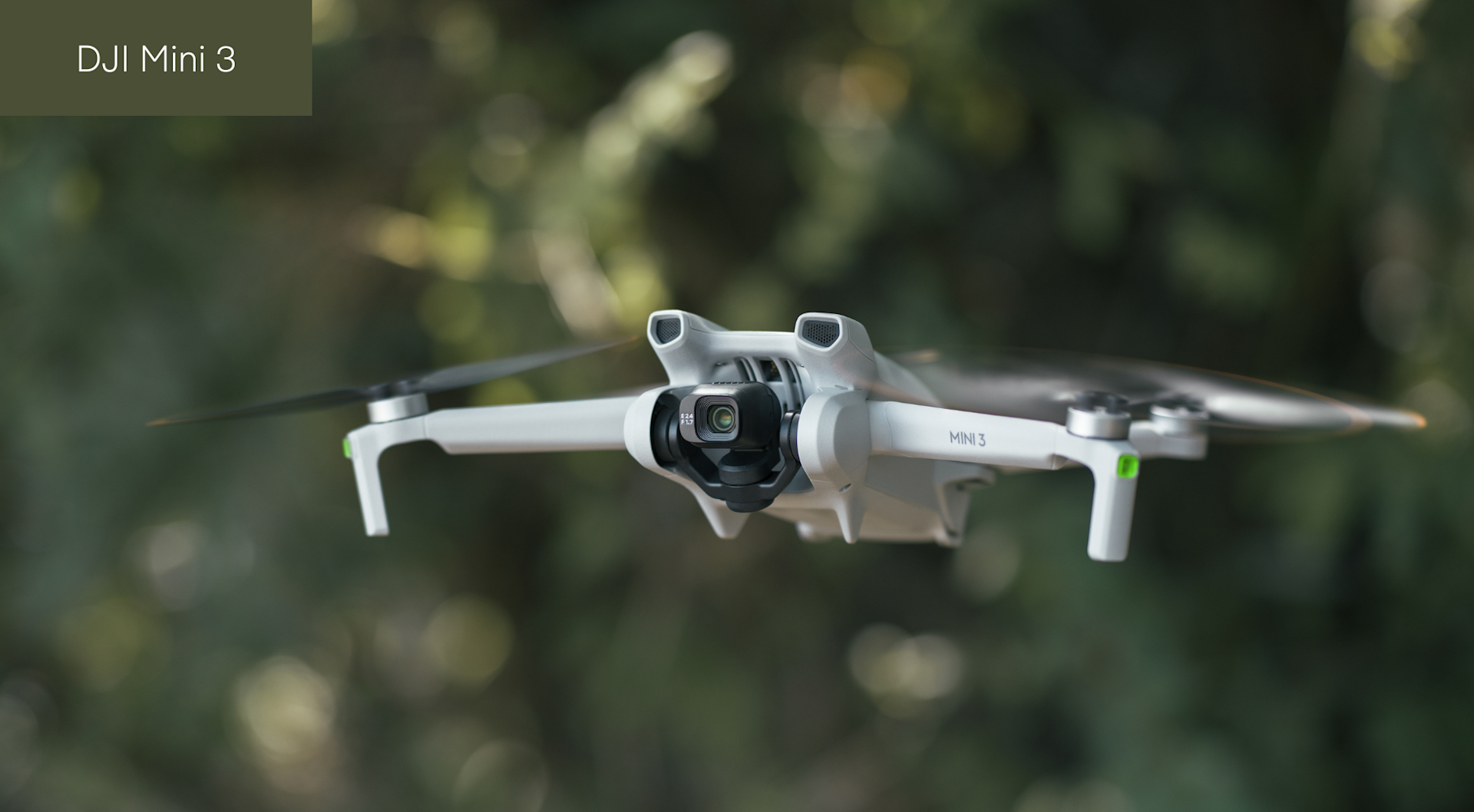
Is it worth the upgrade? Or if you're new to the Mini series, which option is best - the newest model, or last year's Mini 3 Pro/Mini 3?
Find out in this in-depth comparison blog.
DJI Mini 4 Pro vs DJI Mini 3 Pro vs DJI Mini 3 - Key Specs At A Glance
This table provides an at-a-glance overview of the key specifications and features of the Mini 4 Pro, Mini 3 Pro, and the Mini 3.
DJI Mini 4 Pro | DJI Mini 3 Pro | DJI Mini 3 | |
Weight | Under 249g | Under 249g | Under 249g |
Camera | 1/1.3-inch CMOS Wide-Angle Camera True Vertical Shooting | 1/1.3-inch CMOS Wide-Angle Camera True Vertical Shooting | 1/1.3-inch CMOS Wide-Angle Camera True Vertical Shooting |
Video | 4K/60fps HDR Slow Motion: 4K/100fps Night Shots Video | 4K/60fps, 4K/30fps HDR Slow Motion: 1080p/120fps | 4K/30fps HDR |
Colour Grading | 10-bit D-Log M, HLG | D-Cinelike | - |
Safety Features | Omnidirectional Obstacle Sensing, APAS 5.0 | Forward/Backward/Downward Obstacle Sensing, APAS 4.0 | Downward Obstacle Sensing |
Intelligent Flight Features | Advanced RTH, Waypoint Flight, Cruise Control | Smart RTH | Smart RTH |
Transmission Distance (CE) | DJI O4: Up to 10 km. 1080p/60fps Live Feed | DJI O3: Up to 8km 1080p/30fps Live Feed | DJI O2: Up to 6km 720p/30fps Live Feed |
Camera
You buy a Mini drone for its content-creation capabilities, so it makes sense to start with an in-depth look at each aircraft's camera.
All three are equipped with a 1/1.3-inch CMOS sensor and can capture 12MP/48MP imagery. But this only tells half the story.
In short, the Mini 4 Pro has been engineered with a new image-processing platform which improves the overall imaging performance.

Key improvements, include:
Capture 4K/60fps HDR
Ability to use D-Log M and HLG colour profiles
Improved slow motion capabilities
Night Shots Video
So, lets take a look at these in more upgrades in more detail.
Upgraded HDR
When it comes to camera resolution, the Mini 4 Pro and Mini 3 Pro can achieve 4K/60fps, while the Mini 3 Pro tops out at 4K/30fps.
However, the differentiator between the Mini 4 Pro and the Mini 3 Pro in this department is the Mini 4 Pro's ability to shoot at a higher dynamic range, helping you capture great shots in high-contrast situations.
For instance, the Mini 4 Pro can achieve 4K/60fps HDR, compared to the 4K/30fps HDR of the Mini 3 Pro, and also the Mini 3.
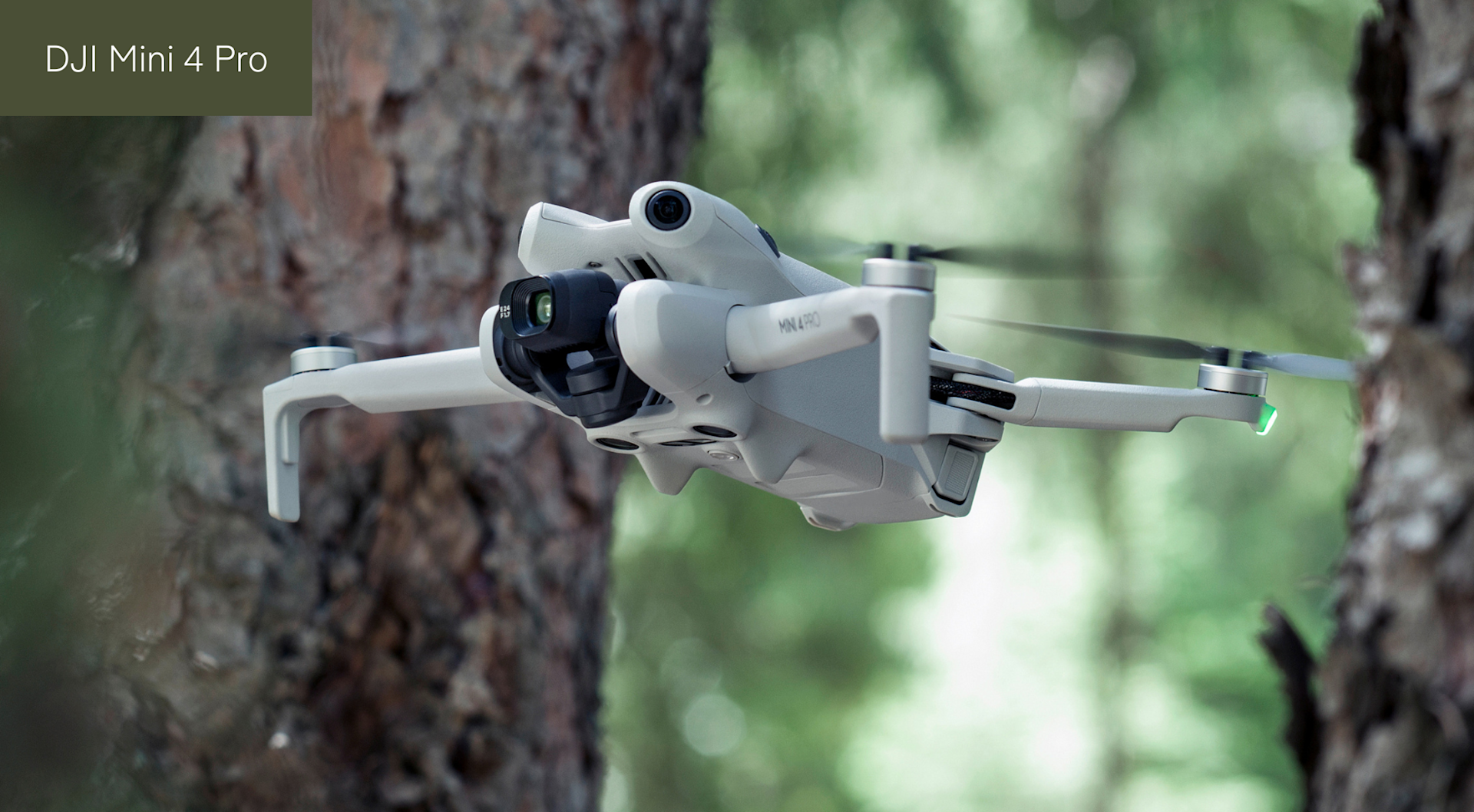
Revamped Slow Motion
Slow motion functionality has also been improved, with the ability to shoot up to 4K/100fps, compared to the Mini 3 Pro's 1080p/120fps. The Mini 3 does not have slow-mo functionality. The Mini 4 Pro's higher resolution improves video clarity, coupled with smooth video from the 100fps.
Night Shots Video
The Mini 4 Pro has the impressive Night Shots video functionality. This adopts a multi-scale noise reduction algorithm to suppress noise for cleaner shots in low-light conditions.
D-Log M and HLG
Mini 4 Pro operators will benefit from 10-bit D-Log M and HLG colour modes.
10-bit D-Log M ensures natural, smooth colour graduations, even in high-contrast scenarios, like sunrise and sunset.
In contrast, the Mini 3 Pro has D-Cinelike colour mode, while Mini 3 just uses normal colour profiling.

NextGen SmartPhoto
This feature on the Mini 4 Pro selects HDR or HyperLight mode based on intelligent scene recognition, achieving higher dynamic range and simulated long exposure at night.
Other Camera Specs
All three Mini drones can shoot in JPEG and DNG (RAW); have up to 4x digital zoom capabilities; are capable of vertical shooting to optimise content for social media, are compatible with LightCut for one-tap editing functionality; and can utilise QuickShots for streamlined content creation.
QuickShots Mode | Functionality | Compatible Drones |
Dronie | The aircraft flies backward and ascends with the camera locked on the subject. | Mini 4 Pro, Mini 3 Pro, Mini 3 |
Rocket | The aircraft ascends with the camera pointing downward. | Mini 4 Pro, Mini 3 Pro, Mini 3 |
Circle | The aircraft circles around the subject. | Mini 4 Pro, Mini 3 Pro, Mini 3 |
Helix | The aircraft ascends and spirals around the subject. | Mini 4 Pro, Mini 3 Pro, Mini 3 |
Boomerang | The aircraft flies around the subject in an oval path, ascending as it flies away from its starting point and descending as it flies back. | Mini 4 Pro, Mini 3 Pro, Mini 3 |
Asteroid | The aircraft flies backward and upward, takes several photos, and then flies back to the starting point. The video generated starts with a panorama of the highest position and then shows the view from the aircraft as it descends. | Mini 4 Pro, Mini 3 Pro |
Design
As their name suggests, the Mini 4 Pro, Mini 3 Pro, and Mini 3 are teeny-tiny drones, with all three tipping the scales at less than 249g.
This is important for numerous reasons.
Highly portable, capture content on-the-go.
Extremely safe, especially useful for beginners.
Drone regulation friendly. Fly in Open category's A1 subcategory (flights over people but not crowds) without needing drone training, A2 CofC/GVC. It makes the Mini series great entry-level drones.
Mini 4 Pro | Mini 3 Pro | Mini 3 | |
Folded (L x W x H) | Folded: 148 x 94 x 64 mm | Folded: 145 x 90 x 62 mm | Folded : 148 x 90 x 62 mm |
Unfolded - with propellers (L x W x H) | Unfolded (with propellers): 298 x 373 x 101 mm | Unfolded (with propellers): 251 x 362 x 70 mm | Unfolded (with propellers): 251 x 362 x 72 mm |
Performance
The Mini 4 Pro, Mini 3 Pro, and Mini 3 are all great performers - especially for their size - and there isn't much separating them in specs such as speed and wind resistance.
All three achieve decent flight time, but the Mini 3 can stay airborne for four minutes longer than the Mini 4 Pro and Mini 3 Pro.
Mini 4 Pro | Mini 3 Pro | Mini 3 | |
Max Flight Time | 34 minutes | 34 minutes | 38 minutes |
Max Speed | 16 m/s | 16 m/s | 16 m/s |
Max Ascent Time | 5 m/s | 5 m/s | 5 m/s |
Max Descent Time | 5 m/s | 5 m/s | 3.5 m/s |
Operating Temperature | -10°C to 40°C | -10°C to 40°C | -10°C to 40°C |
Max Wind-speed Resistance | 10.7 m/s | 10.7 m/s | 10.7 m/s |
IP Rated | No | No | No |
Safety Features
By virtue of their light weight, all three of these Mini drones are very safe aircraft.
But, the Mini 4 Pro packs in some extra features to take safety to the next level.
Omnidirectional Obstacle Sensing
DJI Mini 4 Pro is the first DJI Mini drone to have omnidirectional obstacle sensing, featuring four wide-angle vision sensors and a pair of downward vision sensors.
And the Mini 4 Pro's auxiliary bottom light increases stability while hovering at low altitudes at night. It reduces the likelihood of crashing the drone on uneven ground or without seeing the ground clearly enough.

In contrast, the Mini 3 Pro has a three-way sensing system (forward, backward, and downward), while the Mini 3 has a downward sensing system. Neither the Mini 3 Pro or Mini 3 feature an auxiliary bottom light.
Advanced Return To Home
The Mini 3 Pro and Mini 3 have Return To Home functionality, but the Mini 4 Pro takes things a step further by featuring Advanced RTH, which can plan a fast and safe flight route back to its home point while bypassing obstacles.
It also has AR RTH, which offers a quick view of the RTH route, home point and landing position.
AR RTH Route: View obstacles along the route. This provides an enhanced flight experience.
AR Home Point: View the home point's position and surroundings. Real-time update of the home point.
AR Aircraft Shadow: View the landing position. Requires the gimbal to perform high-angle shots for viewing.
Intelligent Flight Features
The DJI Mini 4 Pro has some advanced intelligent features to help operators get even more from each flight and streamline content creation.
For instance, the Mini 4 Pro features an advanced tracking system - ActiveTrack 360° - as well as other functionality such as Waypoints and Cruise Control.
These are stellar functions, with several key benefits:
ActiveTrack 360°: Customise flight paths and achieve diverse subject-tracking effects. This enables you to swipe a path on the new trace wheel interface to achieve effects like orbiting and spiralling upward.
Waypoint: Enhance shooting efficiency with Waypoint Flight's automatic route function for precise route repeatability. Pre-set points, and the drone will automatically fly along them.
Cruise Control: Reduce operation fatigue during long-distance, steady-state flight and further reduce camera shake with smoother camera movement.
The table below provides an overview of the intelligent functions of the Mini 4 Pro, Mini 3 Pro, and the Mini 3. It shows how the Mini 4 Pro is packed with more intelligent features, compared to the previous generation.
Mini 4 Pro | Mini 3 Pro | Mini 3 | |
ActiveTrack | ActiveTrack 360° | Normal tracking | x |
Waypoint Flight | ✓ | x | x |
Cruise Control | ✓ | x | x |
Hyperlapse | ✓ | ✓ | x |
MasterShots | ✓ | ✓ | x |
QuickShots | ✓ | ✓ | ✓ |
Panorama | ✓ | ✓ | ✓ |
Transmission
DJI Mini 4 Pro has DJI's latest video transmission technology - O4 - which provides more stable video transmission and improved anti-interference capabilities. It also enables an enhanced live-view quality.
Mini 4 Pro | Mini 3 Pro | Mini 3 | |
Transmission System | O4 | O3 | O2 |
Transmission Distance (CE) | 10km | 8km | 6km |
Live-View Quality | 1080p/60fps | 1080p/30fps | 720p/30fps |
The Mini 4 Pro's improved transmission helps to deliver more stable signals to reduce stuttering and frame drops compared to the previous generation.
The enhanced frame rate enables a smoother live view, and the lower latency delivers a faster and more responsive operation experience.
Controllers
The Mini 4 Pro is compatible with the new DJI RC 2 and DJI RC-N2, which provide the basis for the enhanced transmission system.
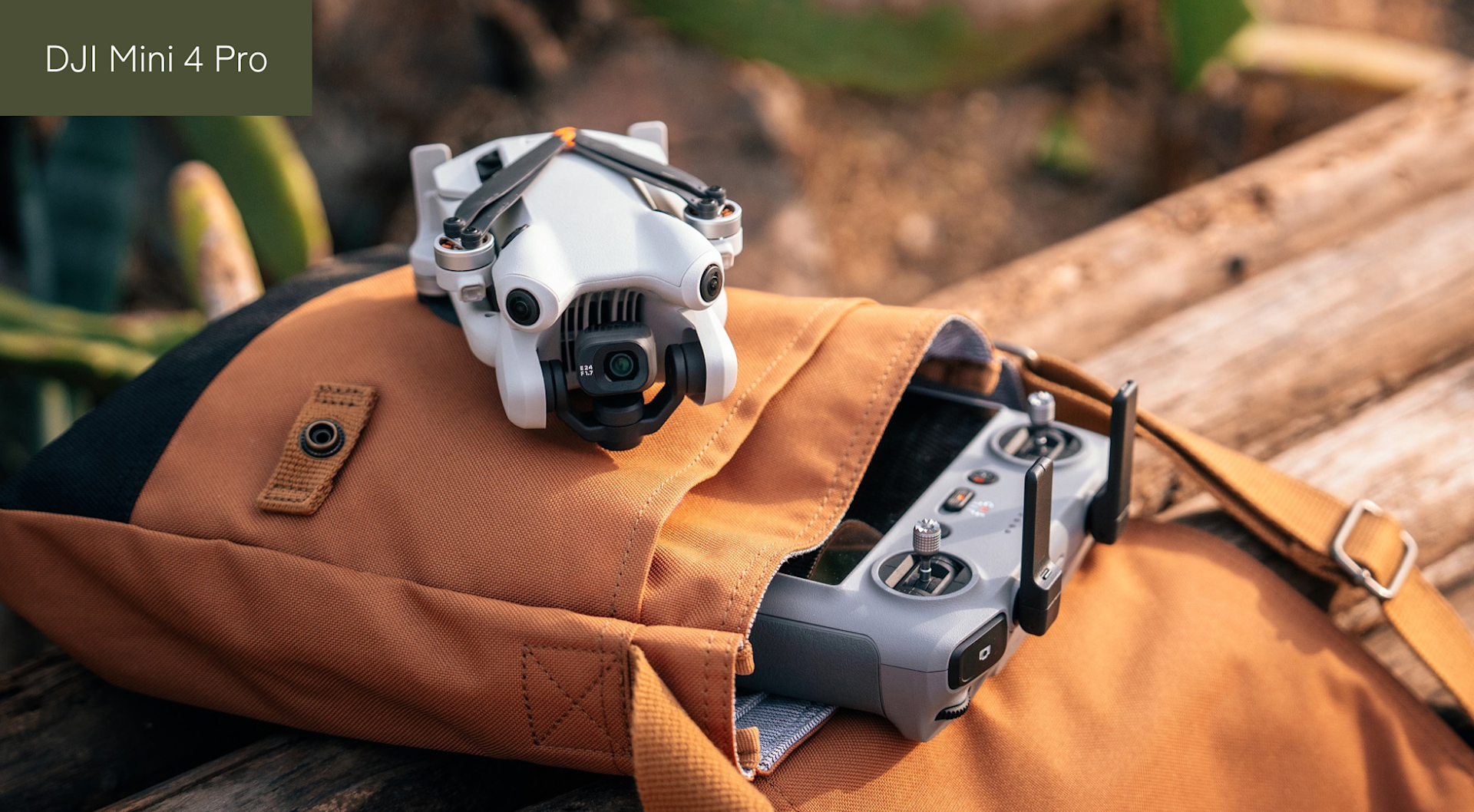
The Mini 3 Pro is compatible with the DJI RC Pro, DJI RC, and DJI RC-N1, while the Mini 3 can be used with the DJI RC-N1 Remote Controller and DJI RC.
On launch, it appears that the Mini 4 Pro is not currently compatible with any DJI goggles, whereas the Mini 3 Pro can be used with the DJI Goggles Integra and DJI Goggles 2.
Price
There isn't too much difference in the prices between the Mini 4 Pro and Mini 3 Pro.
In fact, depending on what package you opt for, the Mini 4 Pro can work out cheaper.
For instance, it is more cost-effective to purchase the Mini 4 Pro RC 2 Fly More Combo compared to buying the standard DJI Mini 3 Pro and DJI RC package and then bolting on a separate Fly More Kit to get the extra accessories.
At the other end of the spectrum, the Mini 3 is the most cost-effective, but is the least powerful out of the three mini drones.
Summary
The DJI Mini drones are ground-breaking, and these drones continue to improve with the release of the Mini 4 Pro.
With its enhanced camera capabilities, omnidirectional object sensing, upgraded transmission, and suite of intelligent modes, the Mini 4 Pro packs plenty into its tiny frame.
These are stellar additions, but whether they are enough to warrant an upgrade from the Mini 3 Pro will be down to personal opinion.
However, the Mini 3, which comes in at the cheapest price point, may well appeal to some users who are happy to sacrifice some functionality and capability to save some cash.
To discuss any of these drones, contact us.
